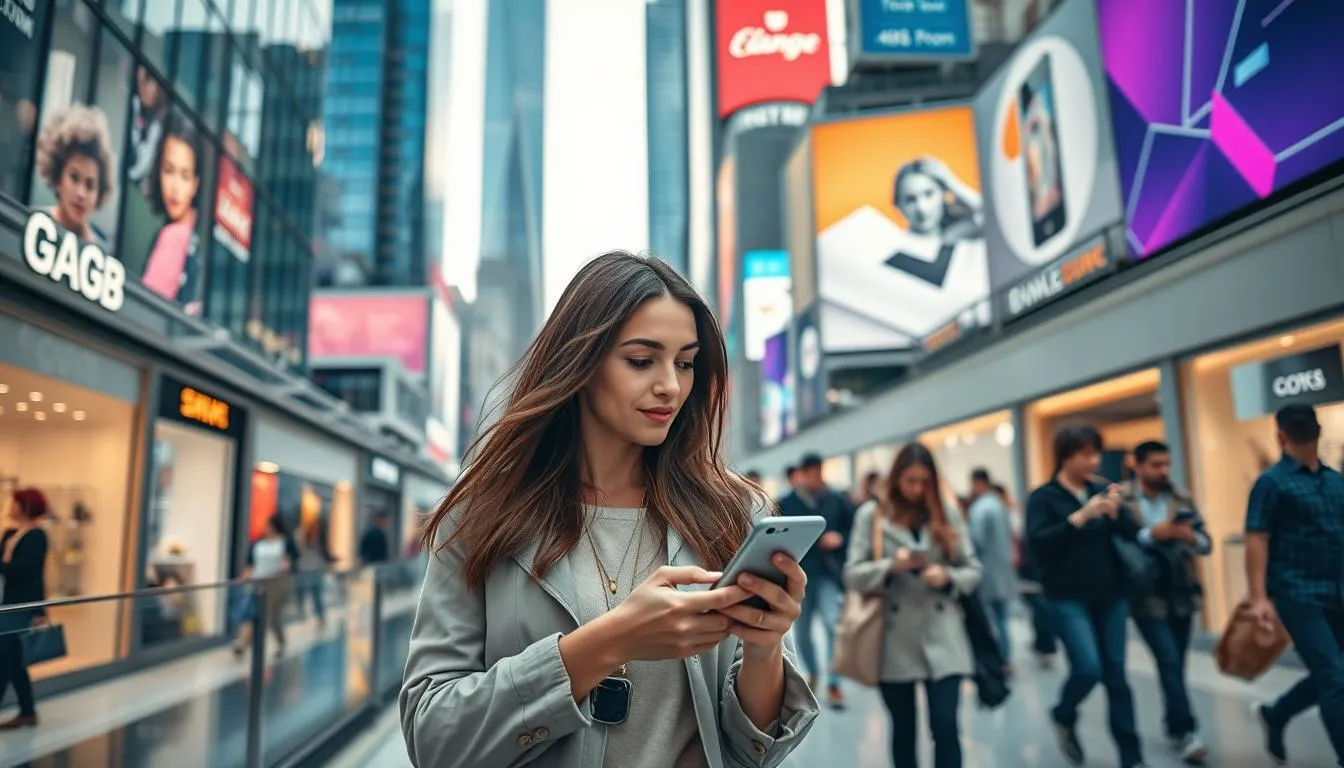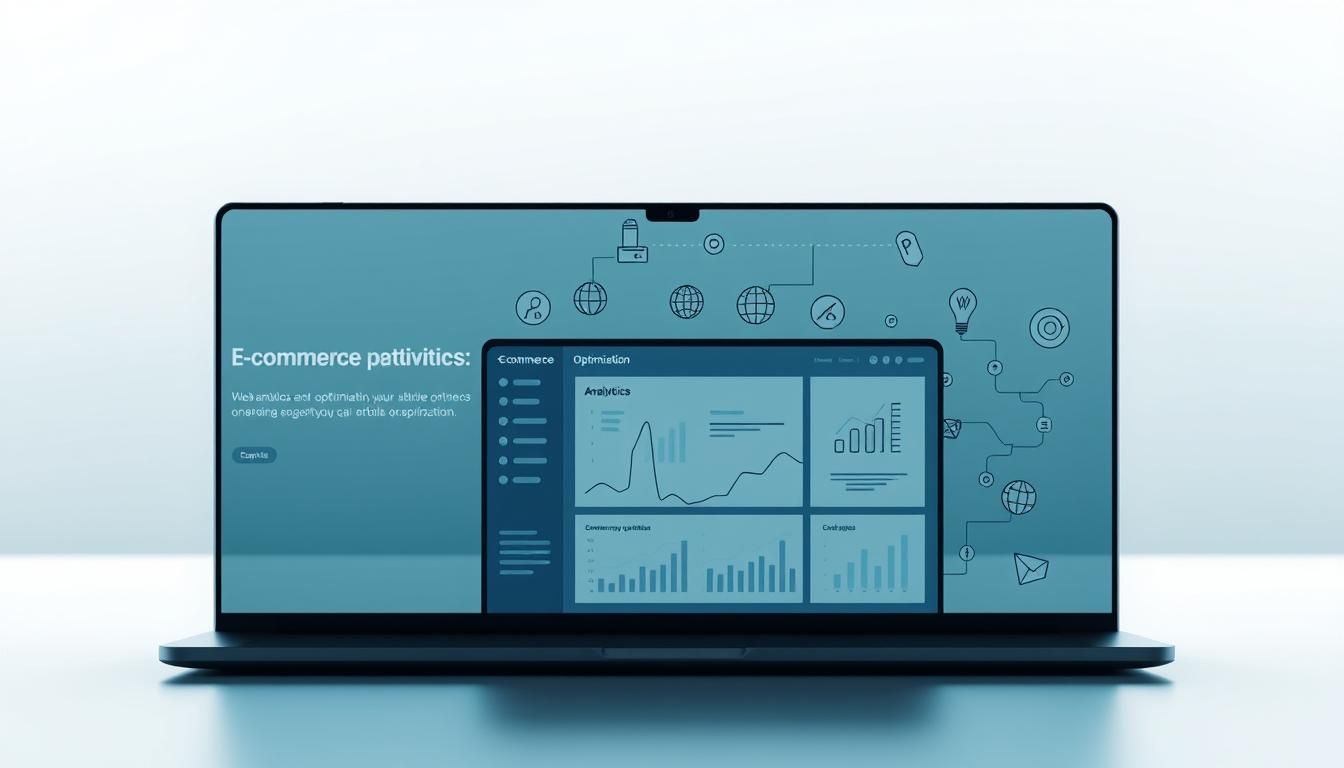Ever stare at your website analytics, wondering why visitors vanish before buying? You’re not alone. Last year, I spent hours tweaking product pages for a client—only to watch 78% of their traffic leave without purchasing. That sinking feeling? It’s why we’re here today.
Here’s the good news: Top-performing online stores convert over 5% of visitors into buyers. Even better? Small, strategic changes often create big revenue jumps. This guide isn’t about quick fixes—it’s about building a system that turns casual browsers into loyal customers.
We’ll walk through methods that helped businesses slash cart abandonment by 40% and boost repeat sales. You’ll discover how faster load times, clearer calls-to-action, and smarter checkout flows work together like gears in a profit machine.
Key Takeaways
-
Current conversion rates average 2.3-3.1%, but top sites exceed 5%
-
Minor adjustments to your site can drive major sales growth
-
Success requires ongoing attention to the buyer’s journey
-
Reducing checkout friction directly impacts your bottom line
-
Strategies combine technical upgrades with customer psychology
Ready to transform your digital storefront? Let’s dive into the exact steps that separate thriving businesses from stagnant ones.
Understanding the E-commerce Landscape
Mobile screens have become the new main street for retail. Over 60% of U.S. shoppers now browse and buy using smartphones—a shift demanding mobile-first designs. Sites that load slowly or display awkwardly on small screens risk losing 68% of potential customers before they even reach checkout.

Current Trends in Online Sales
Shoppers expect tailored experiences. Imagine walking into a store where the shelves rearrange based on your preferences—that’s today’s digital reality. Personalized product suggestions drive most store revenues, with “Customers who viewed this” prompts accounting for 68% of sales.
Comparison shopping is the norm. Visitors check prices across multiple sites before committing. Clear return policies and real-time inventory updates build trust. One fashion retailer saw a 22% sales jump after adding “Only 3 left in stock” alerts.
The Role of conversion rates in Growth
Your conversion rate acts like a fitness tracker for your site. While average rates hover near 2.5%, top performers hit 5%+ by eliminating friction. A single-second delay in load time can drop conversions by 7%.
Track these metrics weekly:
-
Mobile vs desktop conversion rates
-
Cart abandonment reasons
-
Top exit pages
Benchmarking against industry standards helps spot gaps. A kitchenware site boosted repeat sales by 19% after simplifying their checkout flow—proving small tweaks create big wins.
Defining Best Practices for E-commerce Success
Imagine walking into a store where every detail makes you feel safe—that’s what digital shoppers crave. Your website needs to balance speed with credibility, turning hesitant visitors into confident buyers.

Core Components of High-Performing Sites
Fast-loading pages form the backbone of success. Mobile users expect sites to load in 2 seconds or less. Clean layouts with intuitive menus keep people engaged longer.
Three elements separate winners from others:
-
Page speed scores above 90/100
-
Clear “Add to Cart” buttons
-
Guest checkout options
Creating Confidence Through Design
Shoppers decide if your site feels trustworthy in 0.05 seconds. Security badges near payment fields boost conversions by 12%. Real customer photos work better than stock images for building connections.
Display return policies prominently. One outdoor gear seller reduced support calls by 30% after adding shipping timelines to product pages. Live chat buttons signal you’re ready to help.
Remember: Trust grows when actions match promises. Update inventory counts in real-time. Answer questions within 2 hours. These details turn first-time buyers into repeat customers.
Implementing Proven e-commerce optimization techniques for Better conversion rates
The secret to higher sales lies in subtle design choices. Visitors become customers when your site feels like a helpful salesperson, not a maze. Start by mapping your buyer’s journey—every click should answer their unspoken question: “What’s in it for me?”
Building Trust Through Seamless Navigation
Confused users leave. Fast. Simplify menus like a clothing brand did—they cut categories from 14 to 5 and saw a 31% jump in purchases. Page speed matters too: 53% of mobile shoppers abandon sites taking over 3 seconds to load.
Let Data Guide Your Decisions
A/B testing reveals what actually works. Try these tests first:
-
Button colors (red outperformed green by 17% for one tech retailer)
-
Checkout page length (short forms increased conversions by 22%)
-
Product image layouts (grid vs. carousel)
One home goods store boosted sales 19% by testing two discount strategies. Remember: Run tests until you reach 95% confidence. Quick changes based on hunches often backfire. Your goal? Create a site that adapts as smartly as your best salesperson would.
Enhancing Product Pages to Drive Sales
Your product page is where curiosity turns into commitment. Visitors arrive here ready to act—if you give them reasons to click “Add to Cart.” SolaGarden boosted orders by 5.3% simply by refining their content strategy. Their secret? Treating every product description like a conversation with a friend.

Crafting Compelling Product Descriptions
Great descriptions answer two questions: “What is this?” and “Why should I care?” SolaGarden’s revenue jumped 10.9% when they replaced technical jargon with benefits like “Wake up to fresher herbs” instead of “12-inch ceramic pot.”
Try these storytelling tactics:
-
Start with the problem your product solves
-
Use sensory words (“crisp,” “velvety,” “sun-kissed”)
-
Include sizing comparisons (“Fits 3 phones + keys”)
Using High-Quality Images and Social Proof
56% of shoppers dive straight into visuals—but most sites disappoint them. Baymard Institute found only 25% provide enough images. Fix this with:
-
360-degree views (zooms increase conversions by 18%)
-
Lifestyle shots showing products in action
-
Customer photo galleries below professional images
Display reviews prominently. One cookware brand saw returns drop 14% after adding video reviews from verified buyers. Remember: Your page should work like a trusted friend whispering, “You’ll love this.”
Streamlining Navigation for a Seamless User Journey
Think of your website as a map—if roads are confusing, travelers get lost. Clear paths help visitors find products faster, turning casual browsers into happy customers. Amazon proves this works: 49% of their shoppers start with the search bar.
Designing Clear Menu Structures
Menus should mirror how people think. A kitchenware site doubled sales by grouping items into “Meal Prep” and “Entertaining” instead of generic categories. Keep these rules in mind:
-
Limit top-level options to 7 items
-
Use familiar labels like “Women’s Shoes” not “Footwear Solutions”
-
Add breadcrumbs showing the path like “Home > Outdoor > Grills”
Integrating Prominent Search Bars
35% of visitors head straight to search. Make yours impossible to miss—place it center-top with a magnifying glass icon. Auto-suggestions cut typing time by 40%.
Mobile users especially rely on search. Ensure it stays visible when scrolling. Test different placeholder texts like “Find camping gear” instead of generic “Search here.”
Great navigation does two things: Guides people effortlessly and makes your site feel intuitive. When menus and search work together, customers spend less time hunting and more time buying.
Personalizing the Shopping Experience
Ever wish your website could read minds? Modern shoppers crave experiences that feel made just for them. When visitors see products matching their tastes, they’re 43% more likely to convert. Take Lammle’s success: Their exit-intent popups suggesting popular items boosted category page revenue by 26.3%.
Tailored Product Recommendations
Smart suggestions turn browsers into buyers. Analyze browsing patterns to show relevant items. One home decor brand saw 38% higher click-through rates after displaying “Frequently bought together” bundles.
Three approaches drive results:
-
Browsing history: Show similar styles
-
Purchase patterns: Suggest complementary products
-
Location data: Highlight weather-appropriate gear
Leveraging Customer Behavior Data
Data transforms guesswork into strategy. Track which pages visitors linger on, then retarget them with matching offers. email marketing becomes 52% more effective when messages reference viewed items.
Balance is key. Shoppers appreciate helpful tips but dislike feeling watched. Always:
-
Ask permission before saving preferences
-
Let users adjust privacy settings
-
Explain how data improves their experience
As one retail CEO noted: “Personalization works best when it feels like a concierge service—not surveillance.” Get it right, and watch conversion rates climb while building lasting customer relationships.
Optimizing for Mobile: Capturing On-the-Go Shoppers
Shoppers scrolling during commutes or coffee breaks won’t wait for slow sites. Mobile users abandon pages that take over 3 seconds to load—costing businesses up to 50% of potential sales. Speed isn’t optional when 83% expect instant access to product info.
responsive design and Easy Navigation
Responsive layouts adapt to any screen size. A clothing brand saw 41% more mobile sales after ensuring their site displayed correctly on foldable phones. Key elements include:
-
Auto-adjusting image sizes
-
Fluid grid layouts
-
Readable fonts without zooming
| Feature | Optimized Site | Non-Optimized |
|---|---|---|
| Load Time | 2.1 seconds | 4.8 seconds |
| Engagement | 50% higher | Industry average |
| conversions | 4.7% rate | 1.9% rate |
Simplify navigation for thumb-scrolling users. Collapsible menus and fat-finger-friendly buttons reduce misclicks. One outdoor gear seller cut support tickets by 33% after enlarging their “Checkout” button.
Mobile-first design also means rethinking payments. Digital wallet integration boosts completion rates—78% of shoppers prefer Apple Pay or Google Pay over typing card numbers. Remember: Every extra field increases abandonment risk by 11%.
Reducing Cart Abandonment with Strategic Tweaks
Ever filled a cart only to walk away? You’re not alone—66% of shoppers leave before completing purchases. This gap between interest and action costs businesses millions yearly. But smart adjustments can turn abandoned carts into closed deals.
Simplifying the Checkout Process
Friction kills conversions. Offer guest checkout—forcing account creation drops purchases by 34%. Display shipping costs early. One outdoor retailer cut abandonment by 18% after showing rates on product pages.
Accept diverse payment methods. Digital wallets boost completion rates by 22%. Keep forms short: Only ask what’s essential. Auto-fill fields where possible to speed up the process.
Implementing Exit-Intent and Abandonment Emails
Wild Water Adventures recaptured $61,000 using exit popups. These detect when visitors leave and offer discounts or reminders. Time it right—show offers after 30 seconds of inactivity.
Follow up with emails. “Forgot something?” messages with product images convert 13% of abandoners. Add urgency: “Low stock” alerts or limited-time coupons work best. Remember—every recovered cart builds customer loyalty while boosting revenue.
Useful Resources
For additional insights, check out these valuable resources:
- e-commerce best practices - Shopify
- e-commerce marketing strategies - HubSpot
- online store optimization - BigCommerce
- WooCommerce insights - WooCommerce
- e-commerce usability research - Baymard Institute
FAQ
How can A/B testing improve my site’s performance?
A/B testing lets you compare two versions of a webpage to see which drives more sales. For example, testing button colors or headlines helps identify what resonates with visitors. Over time, small tweaks based on data can boost your conversion rate significantly.
What elements make product pages effective?
Strong product pages combine clear descriptions, high-resolution images, and customer reviews. Include bullet points for quick scanning and videos to showcase features. Trust badges like “secure checkout” or free shipping labels also encourage shoppers to click “Add to Cart.”
Why is mobile optimization crucial for sales?
Over 60% of purchases start on mobile devices. A responsive design ensures fast loading, easy navigation, and seamless checkout on smaller screens. Sites like Amazon prioritize mobile layouts, making it simpler for on-the-go buyers to complete purchases.
How do I reduce cart abandonment?
Simplify checkout by minimizing steps and offering guest purchases. Display shipping costs early and use exit-intent pop-ups to offer discounts. Sending a follow-up email with a cart reminder can recover up to 15% of lost sales.
What role do product descriptions play in conversions?
Descriptions answer buyer questions and highlight benefits. Focus on how the product solves problems, not just features. For instance, Nike uses storytelling to connect emotionally, turning casual browsers into committed customers.
How does site navigation impact user experience?
Clear menus and search bars help visitors find products faster. Walmart uses filters like price and ratings to streamline shopping. Confusing layouts frustrate users, leading to higher bounce rates and lost sales.
Can personalized recommendations boost sales?
Yes! Brands like Netflix and Spotify use browsing history to suggest relevant items. Showing “Frequently Bought Together” or “You Might Also Like” sections encourages shoppers to add more items to their cart.
What are exit-intent pop-ups, and how do they help?
These pop-ups appear when a user is about to leave your site. Offering a discount or free shipping in exchange for their email can turn abandoning visitors into leads. Brands like Sephora use this tactic to recover potential lost sales.
